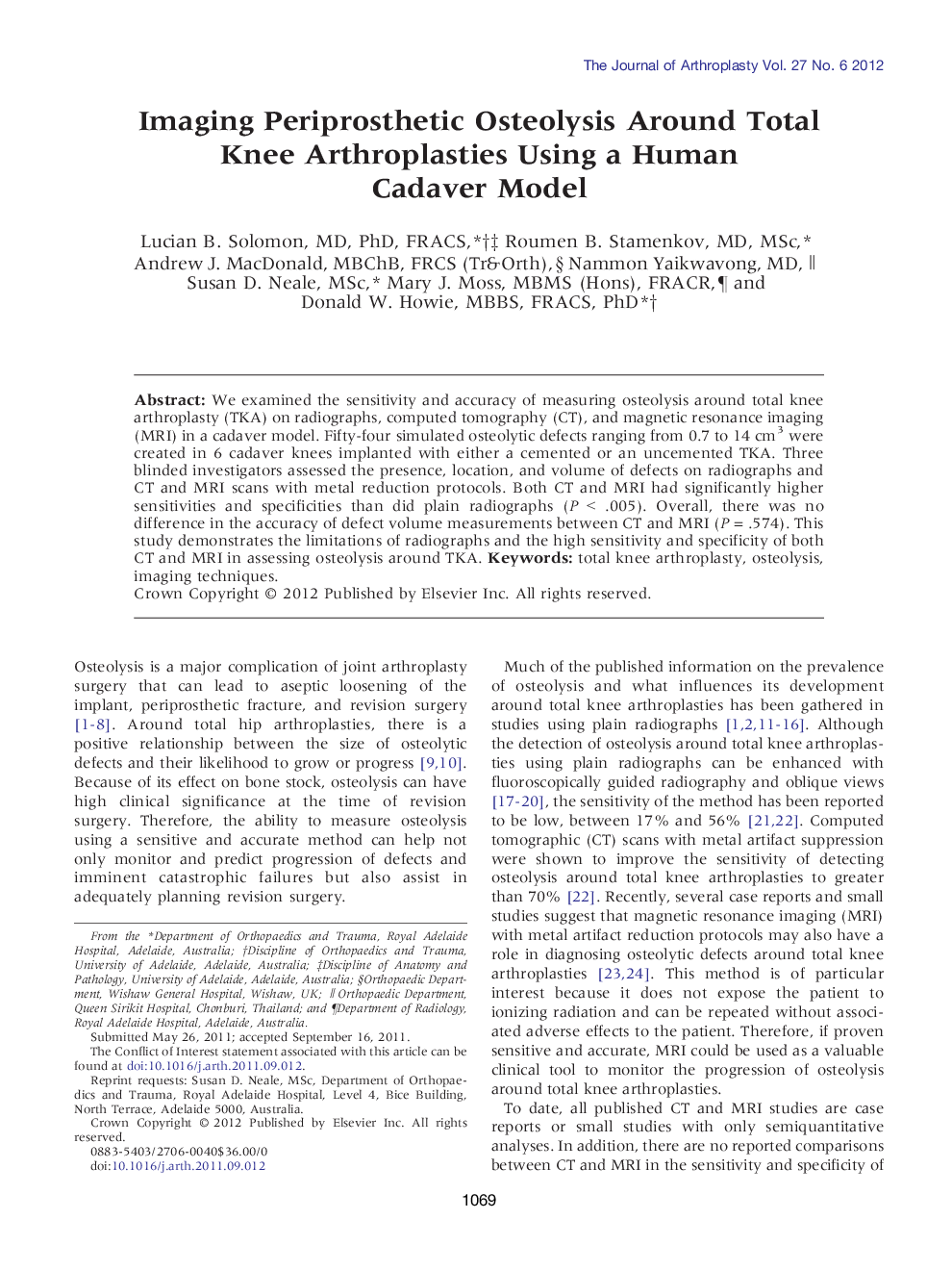| Article ID | Journal | Published Year | Pages | File Type |
|---|---|---|---|---|
| 4061022 | The Journal of Arthroplasty | 2012 | 6 Pages |
We examined the sensitivity and accuracy of measuring osteolysis around total knee arthroplasty (TKA) on radiographs, computed tomography (CT), and magnetic resonance imaging (MRI) in a cadaver model. Fifty-four simulated osteolytic defects ranging from 0.7 to 14 cm3 were created in 6 cadaver knees implanted with either a cemented or an uncemented TKA. Three blinded investigators assessed the presence, location, and volume of defects on radiographs and CT and MRI scans with metal reduction protocols. Both CT and MRI had significantly higher sensitivities and specificities than did plain radiographs (P < .005). Overall, there was no difference in the accuracy of defect volume measurements between CT and MRI (P = .574). This study demonstrates the limitations of radiographs and the high sensitivity and specificity of both CT and MRI in assessing osteolysis around TKA.
